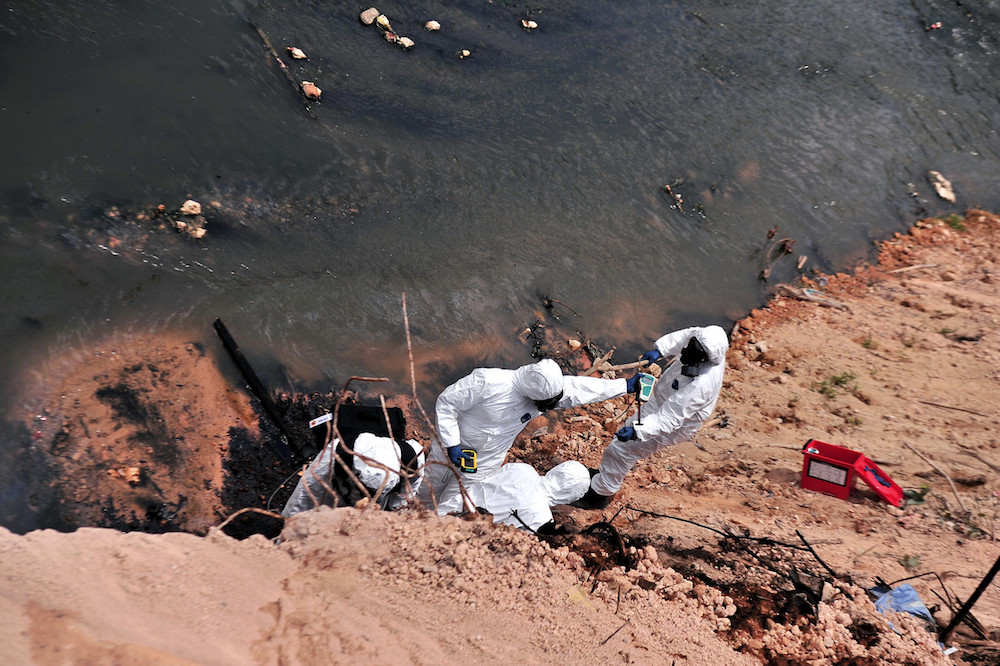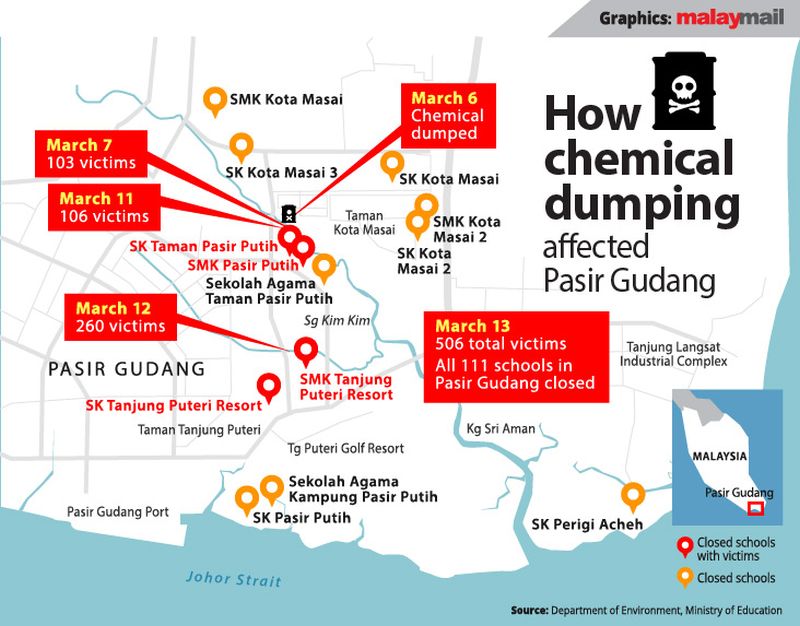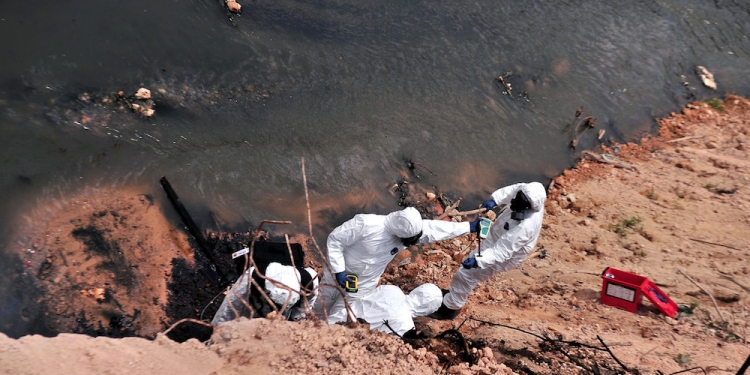
Department of Environment had licensed a company to carry out cleaning up works at Pasir Gudang — Bernama pic
Recently in Pasir Gudang, it is reported that an illegal tyre recycling factory had allegedly dumped chemical waste in Sungai Kim Kim in Pasir Gudang on the 6th March 2019. On the following day, several students, teachers and canteen workers from SMK Pasir Putih and SK Putih had experienced nausea, dizziness and vomiting.
As of 14th March 2019, there are a total of 2,775 people who are affected by the chemical pollution, with 1,906 cases reported in Pasir Gudang and 869 cases in Johor Bahru. Currently, no deaths were reported in this issue. 111 schools near the Pasir Gudang district were ordered to shut, along with kindergartens and preschools as well.

Based on reports from Malay Mail, Energy, Technology, Science, Climate Change and Environment Minister Yeo Bee Yin announced that RM6.4 million will be allocated to handle the clean-up operations in the polluted river. During the emergency motion to debate the Pasir Gudang incident on the 14th March 2019, it was concluded that declaring state of emergency was not necessary but the federal government has already deployed assets and resources in Johor as if it was an emergency situation.
What are the chemicals dumped?
According to Malay Mail‘s report, Johor Department of Environment (DOE) director Datuk Mohammad Ezzani, Mat Salleh, said there are between 20 to 40 tonnes of waste dumped into the river. Reports from New Straits Times and Berita Harian had also listed compounds such as acrylonitrile and acrolein, in addition to methane, hydrogen cyanide, toluene, xylene and limonene.
What do those chemicals do to you?
Although methane is a non-toxic substance, it is highly flammable and may form explosives with water. If you’ve been exposed to large amounts of methane, the oxygen level in your body may be lowered to a point where it may damage your internal organs.
Benzene is a known carcinogen which is also a major component in gasoline. This substance may cause cell dysfunction by altering blood cells, which may lead to the loss of white blood cells and preventing the production of red blood cells, leading to anemia.
Hydrogen cyanide, on the other hand, disrupts the way how organ systems use oxygen. It may cause deadly effects for organs that require a
Acrylonitrile and acrolein are both highly toxic and they are strong irritants for the eyes, skin and nasal passages. Toluene has some similarities to benzene, which is much more toxic.
Are these toxic chemicals used around you now?
Some of these chemicals are found everywhere, but they won’t cause you severe problems at low and acceptable exposure levels. Methane is commonly used as fuel for many things, such as gas stove, cars,
Benzene, on the other hand, is also found in gasoline as an additive. Basically, methane and benzene can be easily found your car’s fuel tank. This isn’t the worst part, benzene can easily be found in cigarettes.
Toluene can also be found in gasoline fuels, but people may be more familiar to it if we call it “paint thinners.” It is responsible for the sharp and pungent smell you’ll find in paint thinners. You’ll also find toluene in superglue, where glue sniffers may use them as intoxicating inhalants.
What should you do?
Exposure to chemicals in large quantities is harmful and the Malaysian Ministry of Health has provided several guidelines if you’re staying near the affected zone. This includes moving far away from the contaminated area as the chemicals can spread depending on temperature, wind speed and weather conditions. If your clothing is contaminated, do not wash your clothes with the rest of your laundry as it could spread to other items.
As always, wash your hands thoroughly before eating and avoid eating exposed food. If you face any health issues such as difficulty in breathing, chest and eye irritation, do seek for medical help immediately.








